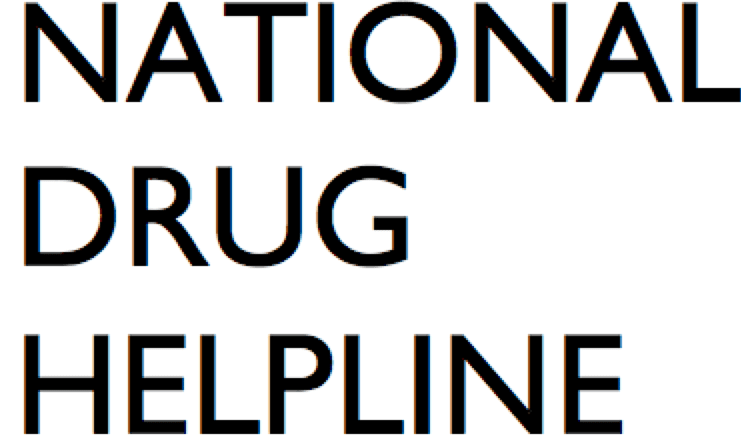If you or a loved one is battling addiction, it can be overwhelming and frightening to call an Alabama drug hotline and reach out for help. But seeking help is the first step towards reclaiming your life. The National Drug Helpline is a toll-free 24/7 hotline that you can access free of cost by calling 1-844-289-0879. Helpful and knowledgeable representatives will answer all your questions and help you access the resources and care you need. We accept calls from all over the state, including Montgomery, Birmingham, Auburn, Huntsville, Mobile, and other communities.
ALABAMA SUBSTANCE ABUSE RESOURCES
- Alabama Department of Mental Health
- SAMHSA Alabama Contacts
- Alabama Prescription Drug Monitoring Law and Rules
- Alabama Fentanyl Crisis
ALCOHOL ABUSE IN ALABAMA
Alcohol is the most frequently abused substance in the state of Alabama. The minimum legal age to purchase, transport, or use alcoholic beverages in Alabama is 21 years.
Common forms of excessive drinking include:
- Heavy drinking (7 or more drinks per week for adult women and 14 or more drinks per week for adult men).
- Binge drinking (4 or more drinks for women and 5 or more drinks for men on a single occasion, i.e., within 2-3 hours).
Alcohol consumption in Alabama has shown a downward trend with 40.8% of residents aged 12+ reporting past month alcohol use in 2015-16 compared to 44.7% in 2013-14. The US National average was 51.2% in 2015-16. [1]
The highest alcohol consumption is by Alabama residents in the age group of 18 to 25 years with 50.8% reporting past month alcohol use in 2015-16, compared to 43.1% of those over age 26 years and 8.1% of adolescents aged 12-17 years.
BINGE DRINKING IN ALABAMA
The practice of binge drinking, common among young adults, is a particularly dangerous one. In 2015-16, approximately 1 in 5 (21.21%) of Alabama citizens aged 12+ reported binge drinking within the past month (the US national average is nearly 1 in 4 or 24.58%). The good news is that binge alcohol use among adults aged 18 years and above in Alabama has shown a downward trend or remained steady from 20.2% of males and 7.9% of females reporting binge drinking in 2011 to 17.4% of males and 8% of females reporting binge alcohol use in 2017. Binge drinking is most common among the 18 to 25 years age group in the state with 21.51% reporting past month binge drinking in 2015-16. [1]
HEAVY DRINKING
Heavy alcohol use in Alabama is likewise most common in the 18 to 24 years age group with 7.2% of adults aged 18 and older reporting it in 2017. In comparison, 6.3% of 25–34-year-olds and 5.8% of 45–54-year-olds reported heavy drinking. Interestingly, heavy drinking was low at 2.2% among 35–44-year-olds. [1]
DRINKING AND DRIVING
Based on 2016 data, 7.6% of Alabama residents aged 18 to 24 years and above reported driving at least once after excessive drinking. Driving under the influence was reported by 6.9% of people in the 25-34 age group and 5.6% of those in the 45-54 age group. [1]
Approximately 27% of drivers killed in fatal motor vehicle accidents in 2016 in Alabama had a blood alcohol concentration above the legal limit of 0.08. Approximately 92% of fatal crashes due to alcohol-impaired driving occurred between midnight and 6 am.
In addition to motor vehicle crashes, other consequences of excessive alcohol consumption include violent crimes such as assault, rape, and robbery. The rate of violent crimes in Alabama in 2017 was around 524 per 100,000 population. The US national average for the year was 382 offenses per 100,000 population. [3]
TREATMENT FOR ALCOHOL ABUSE IN ALABAMA
There is a stark difference in the percentage of men accessing treatment for alcohol abuse compared to women. In 2017, treatment admissions for alcohol addiction consisted of 72.9% men and 27.1% women. In addition, 8.7% of Alabama residents between the ages of 18 and 25 years needed but did not receive treatment at a specialty facility for alcohol abuse. [1]

DRUG ABUSE IN ALABAMA
Alabama is part of the Gulf Coast High Intensity Drug Trafficking Area that consists of 29 counties in six states (Louisiana, Mississippi, Arkansas, Tennessee, and Florida being the other five).
The 2019 Drug Threat Assessment revealed that methamphetamine is the number one drug threat in the state of Alabama, followed by fentanyl and heroin at numbers two and three. Other high availability drugs in Alabama include MDMA, hallucinogens, cocaine, marijuana, and controlled prescription drugs. Drug use data on Alabama residents aged 12+ reveals past year use of illicit drugs as follows:
- Marijuana 9.5% (US national average 13.7%)
- Cocaine 1.2% (US national average 1.8%)
- Heroin 0.3% (US national average 0.3%)
- Pain relievers 5.1% (US national average 4.5%)
Age-wise distribution of drug use shows marijuana use is common among young adults aged 18-25 years in Alabama with 25.9% reporting past year use (US average 32.6%). In comparison, 10.1% of the 12-17 age group and 6.7% of the 26+ age group reported past year marijuana use. [1]
DRUG ABUSE TREATMENT IN ALABAMA
There are 73 certified agencies providing substance abuse treatment services in Alabama, the majority of which receive funding from the Alabama Department of Mental Health. [2]
It is worth noting that multiple treatments are typically necessary for successful recovery from substance abuse. A holistic approach that addresses related issues such as emotional, psychological, social, vocational, legal, and financial concerns, rather than a person’s alcohol or drug abuse alone, has been found to be most effective.
People seeking substance abuse treatment at specialized facilities in Alabama are required to undergo a placement assessment including a screening to determine if they need treatment. The following individuals receive priority admissions to treatment facilities – pregnant women using IV drugs, pregnant women, IV drug users, women with dependent children, and individuals who are HIV positive, followed by all other substance users. [2]
TRENDS IN TREATMENT ADMISSIONS
Trends in the primary substance of abuse at the time of admission to addiction treatment facilities in Alabama reveal the following: [2]
- Opioids were the primary substance abused in 12,075 admissions in 2018 compared to 4672 in 2014.
- Alcohol was the primary substance abused in 6181 admissions in 2018 compared to 6637 in 2014.
- Marijuana was the primary substance abused in 7073 admissions in 2018 compared to 6077 in 2014.
- Methamphetamine was the primary substance abused in 5397 admissions in 2018 compared to 2298 in 2014.
Treatment admissions for various drugs shows a disparity between genders as follows:
- Cocaine as the primary substance of abuse (smoked or other route): Approximately 66% of admissions were men and 34% women.
- Heroin: Approximately 56% men and 44% women.
- Marijuana: Approximately 66% men and 34% women.
- Amphetamines: Approximately 54% men and 46% women.
In 2017, nearly 20% or 1 in 5 people in Alabama needed but did not receive treatment at a specialty facility for substance abuse in the past year. Lack of access to treatment was particularly high in the 18-to-25-year age group with 7.15% of young adults failing to receive appropriate treatment. [1]
TIPS ON CHOOSING A HIGH-QUALITY SUBSTANCE ABUSE TREATMENT PROGRAM
If you are considering admission to a substance abuse treatment facility in Alabama, some of the factors to consider in order to identify a high-quality treatment center include:
- State accreditation
- Use of medications for alcohol and opioid use disorders
- Evidence based practice for treating substance use disorders
- Inclusion of family members in the treatment process
- Ongoing support after completion of the program
DRUG-INDUCED DEATHS IN ALABAMA
Unfortunately, the number of drug-induced deaths in the state have shown an upward trend, rising from 12.2 per 100,000 population in 2010 to 19.7 per 100,000 population in 2017. [1]
Between 2016 and 2017, there was a 11.1% increase in the drug overdose death rate in Alabama. In 2017, there were 422 deaths involving opioids in the state, of which 167 deaths involved prescription opioids. The greatest increase was reported in synthetic opioids (mainly fentanyl) that were responsible for 198 overdose deaths in 2017 compared to 16 overdose deaths in 2012. [2]
References:
- Alabama Department of Mental Health. Alabama Epidemiological Profile: Alcohol, Tobacco, Other Drugs Usage and Abuse 2018. Available online. Accessed on June 28, 2023.
- Alabama Department of Mental Health. Substance Abuse Treatment in Alabama. Available online. Accessed on June 29, 2023.
- FBI News. 2017 Crime Statistics. Available online. Accessed on June 29, 2023.
Last updated: July 25, 2023
